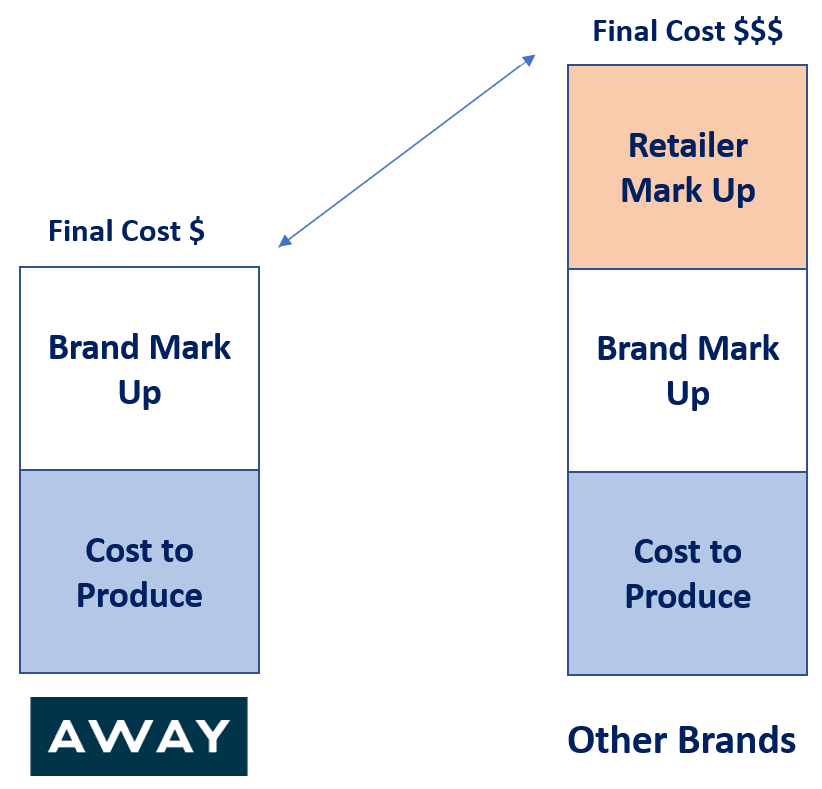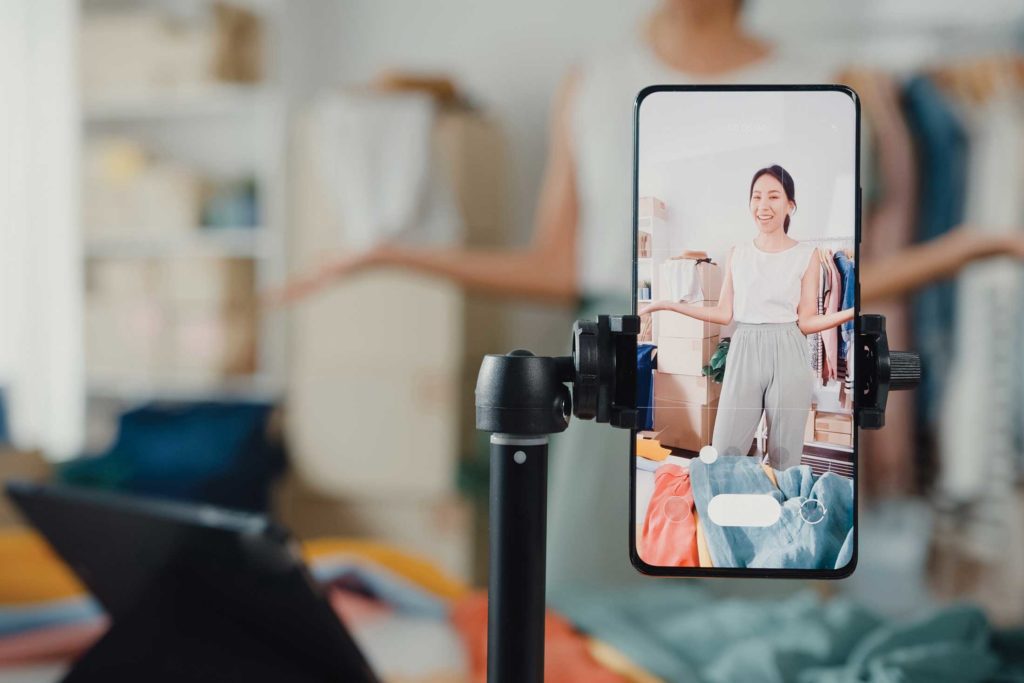For example, Away Luggage is a DTC brand that recently caught my attention on social media. A brand that understands how to create a better product and that brands must also focus on their meaning and values. They provide a better product, well designed, and at a better price. Away Luggage is able to optimize and reach potential consumers easily around an impact moment online that is easy to identify – intent to travel.

So What’s Going On
A 2015 McKinsey study of 730 consumer goods and retail companies with revenue of $500 million or more revealed almost one in five experienced:
- Year-over-year revenue decline of more than 10 percent
- Year-over-year decline of more than 20 percent in EBITDA
According to a recent article by AdAge, 90 percent-plus of US CPG brands are declining in market share and have lost $17B in sales to smaller players in the last five years.
There are now more consumer goods than ever. The average grocery store carries roughly 50 times as many products as 80 years ago, says economist James Bessen. Market researcher Mintel says the number of new packaged goods introduced each year—everything from food to cosmetics—has grown more than 30-fold over the past 50 years.
There’s no question that CPGs are experiencing death by 1,000 cuts. A shift in share from one big brand to another is no longer the year after year war the big CPGs are fighting. It’s the on-going battles against the inventors in their garages.
How Are They Doing it?
New and emerging brands can be “asset and inventory light.” Today, it is relatively easy to outsource manufacturing; there is a rapidly growing third-party logistics provider industry, and social media has enabled cost-effective media. These trends have resulted in an entrepreneurial renaissance in the consumer-products space.
Being a digitally native DTC brand is a major advantage with no sacred cows or clunky retail-laden processes required to follow. Through the use of e-commerce marketplaces and their own websites and apps, these brands are able to obtain scale in a much more rapid fashion and less expensively than relying on the brick-and-mortar retail channel alone.
I still find it fascinating that many CPGs treat their digitally owned retail channels just like another “store.” There are so many advantages to a DTC marketplace, but to win, CPGs must operate by a new set of rules.
Connect Directly with Influencers
Casper, the new upstart mattress company, a digital-first brand around sleep has upended the category initially through influencer marketing. All over Instagram and Twitter, you can find heavily retweeted and liked images, GIFs, and videos of influencers sitting and smiling with their blue and white-striped Casper deliveries. Content ranges from the everyday consumer to celebrities. When Kylie Jenner posted a picture of her new Casper mattress in March of 2015, it received over 800,000 likes and immediately doubled Casper’s net mattress sales.
The ability to talk directly to influencers via social channels has opened entirely new media strategies for entrepreneurs. Direct-to-consumer native brands are transparent, have “digital courage” and understand how to win and pitch influencers within categories where most big brands appear old school and out of touch.
First-Party Data Advantage
CPGs that sell through retailers are at the mercy of the retailer and what they are willing to provide. Digitally native brands selling from their platforms hold the keys to their data. By leveraging data, new-world CPGs start smart and get smarter through what they learn and then can quickly apply the knowledge to acquire new customers.
Some of the best-performing campaigns are when we can build “look-alikes” from current customers. For CPGs and retailers who predominantly rely on third parties to sell their products, the only data they can provide are their CRM files which are paltry compared to DTC digitally native companies.
It is estimated that Unilever bought Dollar Shave Club for close to $1 billion in 2016. Much of the premium stems from the value Unilever placed on the razor-seller’s brand, customer-relationship skills and 3 million new customers that Unilever could immediately leverage across their portfolio – a big first-party data DTC advantage compared to their competition.
Personalized Discovery
Consumers’ media rituals now live “in the stream.” Facebook, Instagram and Twitter have re-programmed our brains to react with our thumbs. The right message and the right time in the right social stream can easily drive a purchase.
Brands can be discovered and bought with as little as one impression. In fact, the 2018 KPCB Internet Trends report finds that 55 percent of people bought a product online after seeing it on social media.
Targeting criteria based on interest, behaviors, likes and activity can catch “willing thumbs” at opportune moments. In the old-world media model, we had a primary and secondary target all based on demographics – that’s it. Digitally native, new-world DTC CPG and retailers have hundreds of campaigns with hundreds of audiences serving dynamic ads where algorithms decide who to show the ads enabling brands to reach people who have expressed interest.
DTC brands like Gravity Blankets, Chubbies Apparel, Knockaround Sunglasses and Epic Canvas are all brands I have found and purchased from via well-timed, creative social paid ads delivered to me in my stream.
At Empower, we are pushing our clients to find and establish their niche by clarifying specific audiences in their media distribution. The only way to do this is to think DTC, which should also imply “doing things collaboratively.” To win the battles and ultimately the war, agency and client must be in the trenches together.







